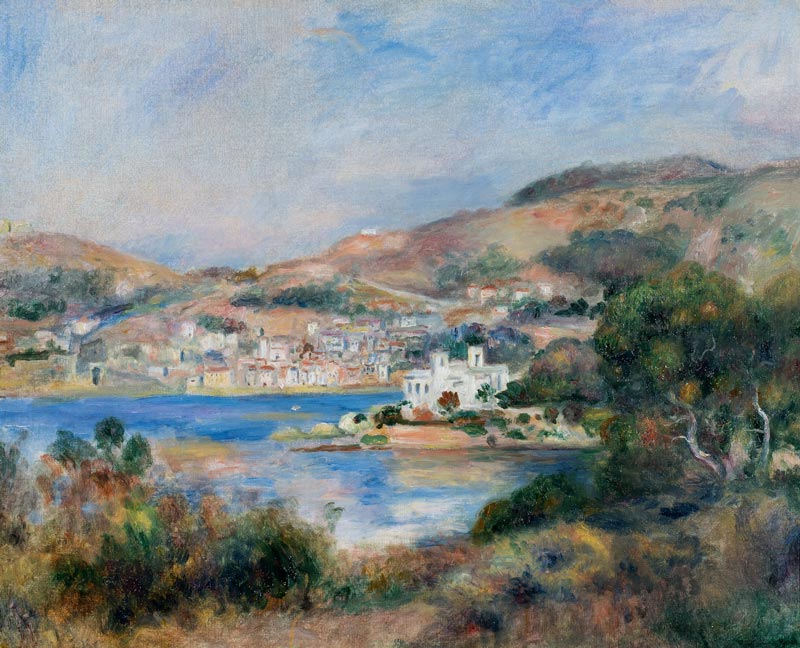Rubens, Goya, Bronzino: an old masters auctions marathon in New York
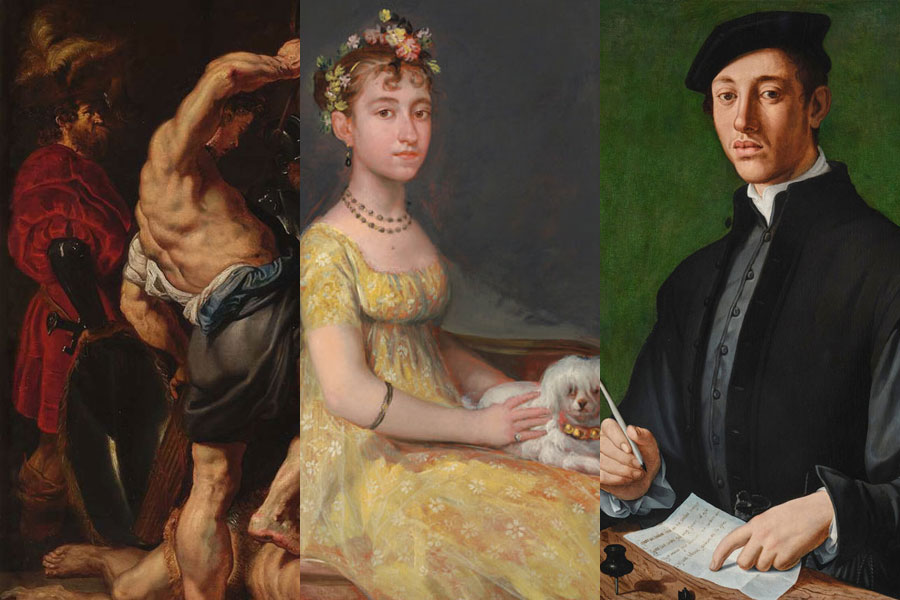
A review of Christie’s and Sotheby’s old masters auctions in New York from 25 to 27 January 2023.
By G. Fernández – theartwolf.com – Texts written between December 25 and 28, 2022 – reviewed January 25 and 26, 2023
Remastered: Old Masters from the Collection of J.E. Safra at Christie’s, 25 January 2023
The first -chronologically- sale in this auction marathon has been titled by Christie’s as “Remastered: Old Masters from the Collection of J.E. Safra”, and it is important to note that the works, according to the auction house, will be offered “without reserve”, that is, each work will be sold without the need to reach a minimum price, so it is a good opportunity for collectors to get a “bargain” within a group of paintings which, although it does not have any masterpiece, does include some works of interest. I will try to review them in a more or less chronological order.
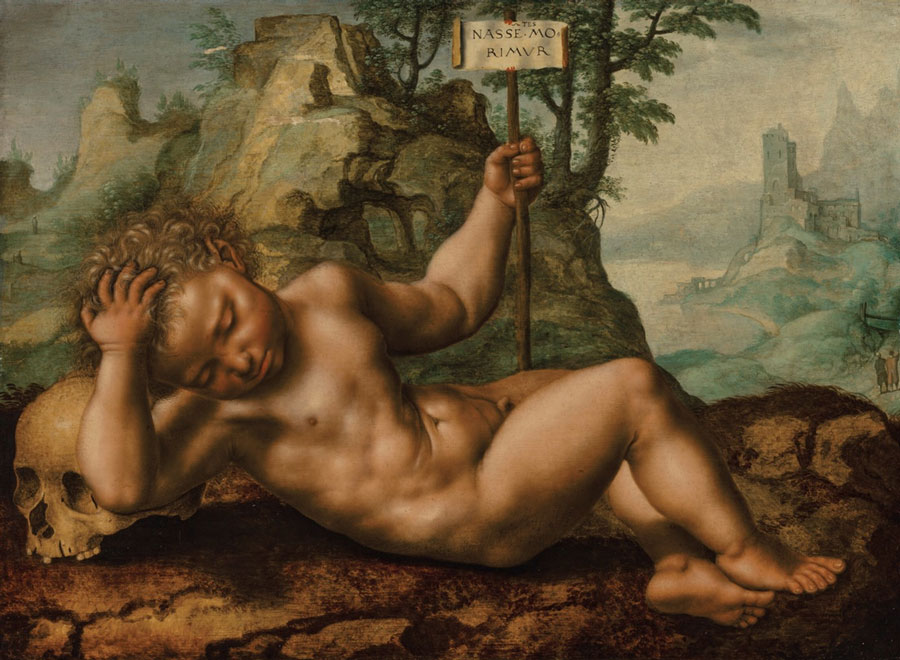
A toddlers guide to bodybuilding? No, a “Vanitas” by Jan Sanders van Hemessen.
Let’s start with the Renaissance. One of the stars of the auction is a “Portrait of a Gentleman holding gloves” by Joos van Cleve, one of the most important Flemish painters of the first half of the 16th century. Christie’s published a long and fairly well-argued essay by Peter van den Brink, in which the author agrees with the attribution to Van Cleve published by Max J. Friedländer almost a century ago, although he places it chronologically in the 1530s. The work carries a pre-sale estimate of between $1 million and $1.5 million, well above other portraits attributed to Van Cleve auctioned in recent years, including a supposed portrait of King Christian II of Denmark, which sold for around £475,000 in 2020, and a portrait of a young nobleman sold for a similar amount in 2014. Identical in estimate to the above portrait is Jan Sanders van Hemessen‘s “A Vanitas: As We Are Born, We Die“. Painted around 1554, this quite bizarre child bodybuilder is clearly a product of its time, difficult for contemporary audiences to appreciate. Interestingly, just a month ago Christie’s auctioned another “Vanitas” evidently inspired by this composition, attributed to a follower of Van Hemessen. This work was sold for just $655,200.
Let us turn now to the Dutch Golden Age. Bartholomeus Breenbergh (1598-1657) achieved a certain fame during his lifetime thanks mainly to his Italianate landscapes. This auction, however, includes a magnificent “Portrait of a Gentleman holding a letter” reminiscent of works by Frans Hals, which has a very modest pre-sale estimate of between $120,000 and $180,000. In scale and style, it would make a good pair with Pieter de Hooch‘s late “An Interior with two Gentlemen and a Woman beside a fire” (c.1675-80), which has a pre-sale estimate of between $200,000 and $300,000. And as there is a Breenbergh reminiscent of Hals, and a De Hooch reminiscent of Vermeer, the auction could not miss a work in the line of the third -and most important- figure in the “holy trinity” of the Dutch Golden Age, Rembrandt. And this is “Esther at her toilet” by Aert de Gelder (1645-1727), the last and perhaps most loyal of all Rembrandt’s pupils. The work carries a pre-sale estimate of between $1 million and $1.5 million, one of the highest at the auction. Only the painting by Bartholomeus Breenbergh partly lived up to its expectations, fetching $126,000.
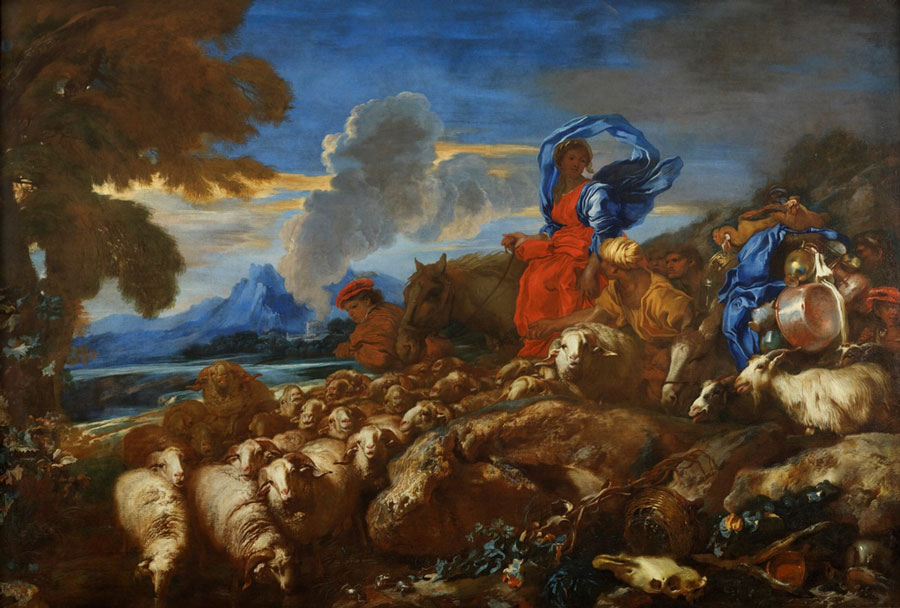
The most fascinating of all the paintings in the Safra Collection: “Jacob’s Journey” by Giovanni Benedetto Castiglione
Among all the works in the J.E. Safra Collection, none attracts my attention as much as “Jacob’s Journey” (c.1650), a monumental painting by Giovanni Benedetto Castiglione (sometimes called Il Grechetto). It is a fascinating work, unashamedly baroque, exaggerated, full of bravura. In the catalogue of the exhibition “Castiglione: Lost Genius” (2013), Timothy J. Standring and Martin Clayton explained that “Castiglione’s early reputation was based on his ability to paint animals and pastoral journeys. Like many artists of his generation, he then sought greater fortune by attempting to make more ambitious paintings for more discerning clients—he aspired to produce major works of mythological and religious subjects.” A great example of this wonderful blend of the pastoral and the mythological, this magnificent painting has a pre-sale estimate of only $250,000 to $350,000. “Jacob’s Journey” was auctioned for $378,000.
The work with the highest pre-sale estimate of the auction is -curiously- not a painting, but an album containing a frontispiece and 138 illustrations for books I to VI of the Fables of Jean de La Fontaine, created by Jean-Baptiste Oudry, one of the leading figures of the French Rococo. Christie’s, noting that “it is hard to think of a more fortunate encounter between a painter and a literary work than that between the greatest of French animaliers, Jean-Baptiste Oudry, and the fables of Jean de La Fontaine (1621-1695),” expects this very interesting album to sell for between $1.5 million and $2.5 million. It sold for $2.7 million.
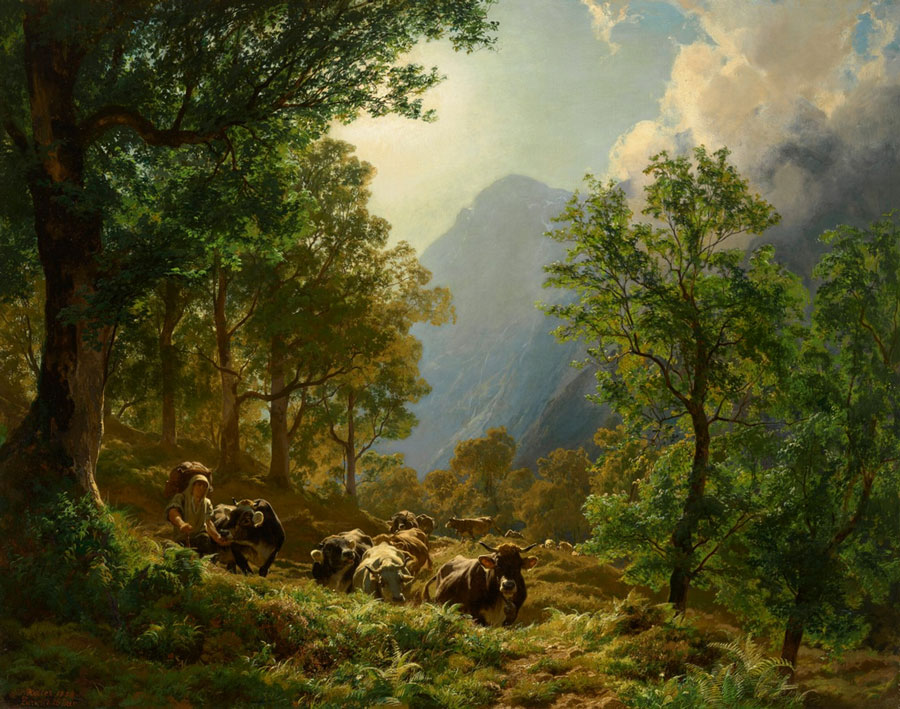
An Alpine beauty: “Shepherd with Cows” (Hirte mit Kühen) (1858) by Rudolf Koller.
Among the 19th century works, “The Splügen Pass” is a very fine watercolour by Joseph Mallord William Turner that has the second highest pre-sale estimate of the auction (between $1.5 million and $2 million). With an estimate of only $15,000 to $25,000, Rudolf Koller‘s “Shepherd with Cows” (Hirte mit Kühen) (1858) is the very definition of “bucolic” and a clear demonstration that 19th century painting continues to be undervalued by the market (with the obvious exception of Impressionism). It is an excellent landscape, as is Ferdinand Georg Waldmuller‘s “Katereck (Dorf Ahorn gegen Loser)” (1833), a much smaller work which nevertheless has a much higher pre-sale estimate (between $100,000 and $150,000). Just a month ago, Sotheby’s auctioned a “View of Ramsau near Berchtesgaden” by the same artist (larger but in my opinion somewhat less attractive) for just over $150,000. The Waldmuller sold for $113,400. Rudolf Koller’s “Shepherd with Cows” fetched $69,300, a very, very deserved success!
Old masters at Christie’s, 25 January 2023
The big star of Christie’s auction is a pair of portraits of Doña María Vicenta Barruso Valdés and her mother Doña Leonora Antonia Valdés de Barruso, painted by Francisco de Goya in 1805, which have an estimate of between $15 million and $20 million, a price which -if achieved- would be a record for a Goya portrait sold at public auction, even if the figure were divided by two, bearing in mind that -in reality- they are two separate works. Of course, this does not include the nearly 24 million euros paid in 2000 by the Spanish state for “The Countess of Chinchón“, a magnificent canvas sold at private sale.
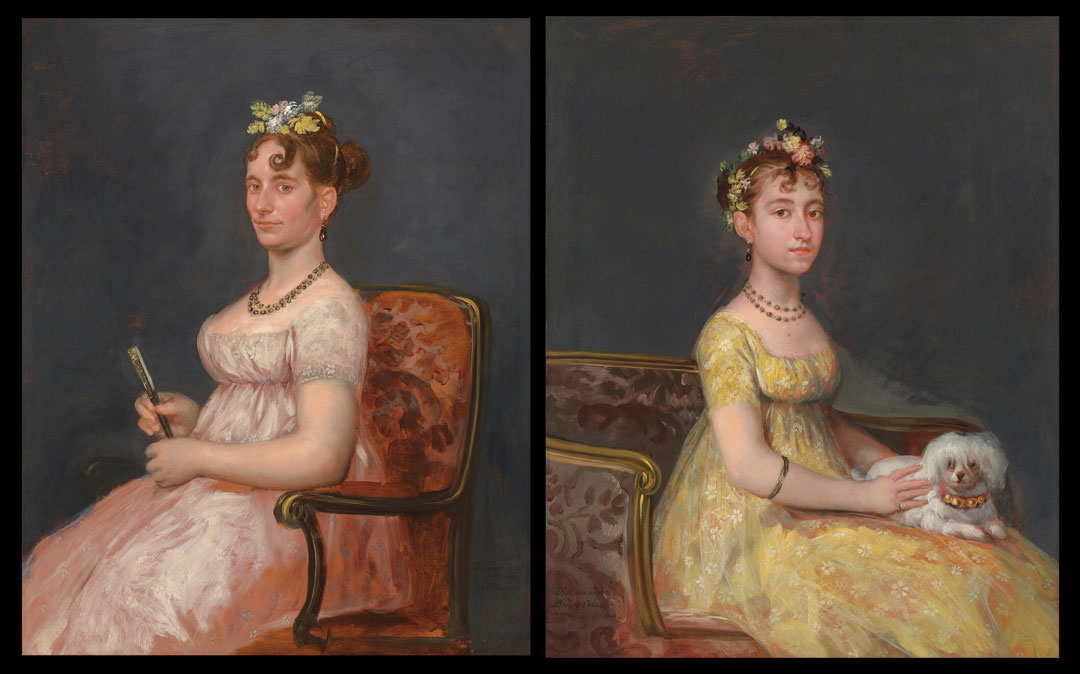
Portraits of Doña María Vicenta Barruso Valdés and her mother Doña Leonora Antonia Valdés de Barruso, by Francisco de Goya
Goya, an extraordinary artist, arguably the most important of his time, still seems to have failed to gain recognition on the art market. Although none of his masterpieces have appeared on the international market in recent times (and it is difficult for them to do so, since the few masterpieces in private hands are located in Spain and have the status of non-exportable, with very few exceptions such as “Heads in a Landscape“, perhaps the only one of the Black Paintings not on display in the Prado Museum), some very interesting works have come up for auction, the most notable case being the small but important “Portrait of Mariano Goya“, which was put up for auction in 2013 with an estimated price of between $6 million and 8 million, but which inexplicably failed to find a buyer, and was later wisely acquired by the Meadows Museum. Despite this, Christie’s relatively high estimate is very reasonable. Both portraits were painted in 1805, a period when Goya was at his peak as a portrait painter. Around this time Goya must have painted his famous “La Maja vestida“, as well as the “Portrait of Isabel Cobos de Porcel“, which J. Gudiol Ricart (“Francisco de Goya”, 1981) defines as “one of the three or four best female portraits in all Spanish painting“.
While his allegorical works are often shocking and superlative, with a tendency towards the macabre and even the grotesque, Goya’s portraits are full of half-hidden details, of aspects that are only appreciable if one takes into account both the Spanish society of his time and the somewhat enigmatic character of the painter, and his relationship with the portrayed figure. Christie’s writes in the catalogue of these works that “placing emphasis on the exquisitely dressed, elegant daughter, the pendants may have been intended to promote her as an eligible bride for prospective suitors. In a sense, therefore, the subtle smile on the face of her mother, who serves as a decorous chaperone to this encounter, can be seen as an invitation to the viewer to participate in this conceit, encouraged to look back at the thoughtful, gentle features of the young María.” María, however, is not smiling. Her expression is gentle, yes, but not servile. In their biography of Goya, Rose Marie and Rainer Hagen devote a chapter (entitled “They do not smile: Spanish women“) to the situation of women in Spanish society in the late 18th and early 19th centuries, pointing out how “in Goya’s time a slow emancipation begins”, which the painter reflects in his numerous female models who look, bare-faced and self-assured, at the viewer. The two Goyas were sold for $16.4 million.
In addition to this double family portrait, the auction has a second “nobiliary 2 x 1”, the “Portrait of Prince Christian I of Saxony (1560-1591), full-length; and Portrait of Princess Marie of Saxony (1562-1566), full-length” by Lucas Cranach II (also called Lucas Cranach the Younger), which have the third highest estimate of the auction (between $3 million and $5 million). Cranach the Younger (like Brueghel the Younger, an artist also represented at the auction) is a much less original artist than his father, Lucas Cranach the Elder, and the estimate for both works seems rather ambitious.
Speaking of couples: the auction also includes a small “Le petit dessinateur” (1733-35) by Jean-Baptiste-Siméon Chardin, which is the pendant to “L’ouvrière en tapisserie“, a work of which several versions survive, one of which was auctioned ten years ago by Christie’s for around $4 million, although in the case of this “Le petit dessinateur” the estimate is much lower (between $500,000 and $800,000). It is understandable, therefore, and perfectly appropriate, that Christie’s should refer to the work sold in 2013 in the catalogue for this work. What is rather less understandable is that -as our reader MF Anders/ Bloomsbury, whom I thank for his observation, has pointed out- Christie’s has reproduced, virtually word for word, much of the text from the 2013 catalogue in the work now on auction. Recycling is not always the right approach! Anyways, this Chardin sold for $1,26 million, a very respectable price.
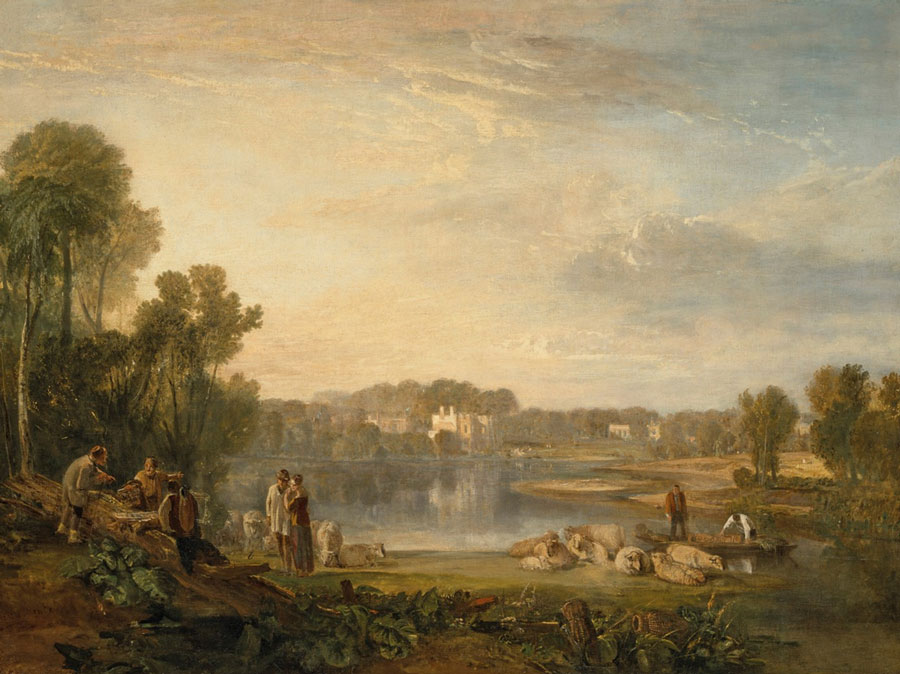
Joseph Mallord William Turner, “Pope’s Villa at Twickenham”
“Pope’s Villa at Twickenham” is a landscape from early in Joseph Mallord William Turner‘s career and has a pre-sale estimate of $4-6 million, the second highest of the auction. The work returns to the market after having been auctioned in 2008 for £5.4 million (almost $10 million at the time), which makes the pre-sale estimate at this auction seem very conservative. It is clearly not one of Turner’s great masterpieces, and the fact that it was auctioned relatively few years ago may affect its valuation, but it is an interesting landscape -and of considerable size- by the man who is arguably the most important landscape painter in the European tradition. The recent sale of Ivan Aivazovsky’s “The Wrath of the Seas” (another 19th-century landscape returning to the market after having been auctioned 15 years ago) for a price above expectations could serve as a hopeful precedent for this Turner. This Turner was sold for $4.6 million, quite a bargain.
As in almost all auctions of old paintings, there are works with unreliable attributions. The most striking case is “Le Pèlerinage a l’Ile de Cythère“, a smaller version of the Louvre’s famous work by Jean Antoine Watteau, which Christie’s ascribes to Watteau himself without any doubt, stating, perhaps a little too optimistically, that “there can be no doubt about the attribution of the present work. Even a superficial glance at the painting would dispel any question as to the identity of its author.” If this is true, the estimate for this 97 x 116 cm painting should be much higher than that published by Christie’s (between $2.5 million and $3.5 million). This painting was auctioned for $1.86 million. There is also some doubt about the attribution of two works by Peter Paul Rubens (“The Mystic Marriage of Saint Catherine” and a beautiful “Portrait of a Lady, probably Isabella Brant (1591-1626), as a Shepherdess“), about a spectacular “Joseph presenting his father and brothers to the Pharaoh” attributed to François Boucher, which should exceed its estimate of between $200,000 and $300,000 as it is an excellent painting, regardless of its author (surprisingly, this painting was not sold); and also about the painting with the lowest pre-sale estimate of the auction, a “The Virgin and Child in a Chamber” attributed to Hans Baldung Grien (sold for $327,000 against a pre-sale estimate of only $30,000 to $50,000). Also up for auction is a beautiful portrait of “The Blessed Laduina” painted by Giambattista Tiepolo and an imposing “Portrait of a Gentleman” by Artemisia Gentileschi.
Baroque: Masterpieces from the Fisch Davidson Collection at Sotheby’s, 26 January 2023
The first of Sotheby’s auctions includes only a dozen works, but among them is the painting with the highest pre-sale estimate of this entire old masters marathon: “Salome presented with the head of Saint John the Baptist“, painted circa 1609 by Peter Paul Rubens. The work carries an estimate of between $25 million and $35 million, and was last auctioned in 1998, when it fetched a mere $5.5 million. Only two other Rubens paintings (“The Massacre of the Innocents” and “Lot and His Daughters“) have fetched higher prices at auction.
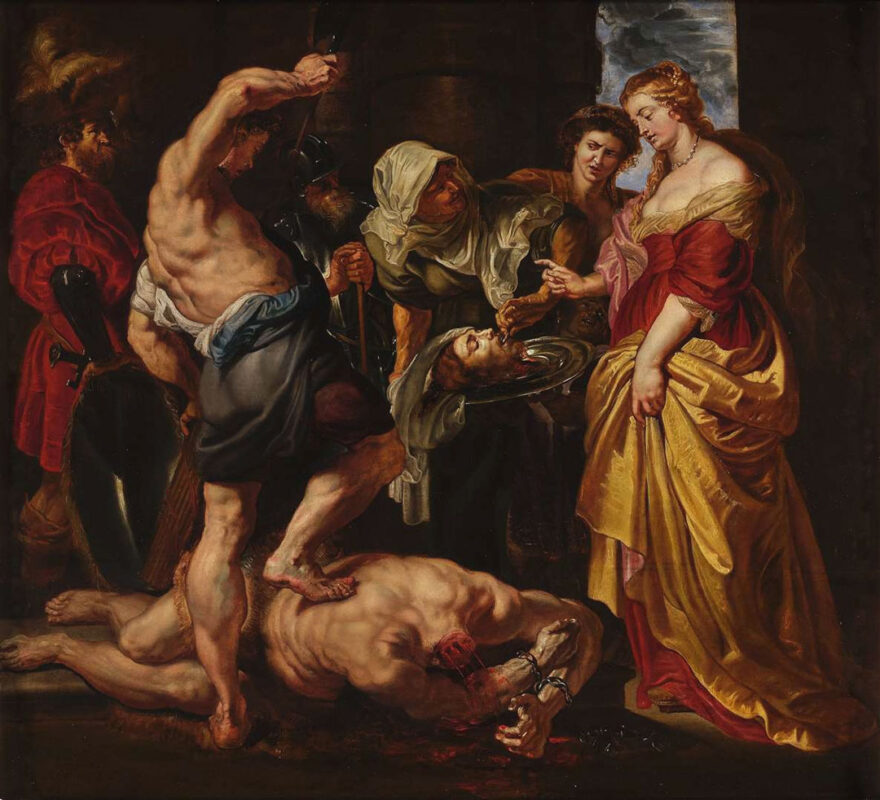
Excuse me, I think the steak is a bit uncooked for me… “Salome presented with the head of Saint John the Baptist” by Peter Paul Rubens
One possible explanation for this remarkable increase in valuation (unusual for a Baroque painting) is that the attribution to the master is now much more accepted. When the painting was sold in 1998, it was only eleven years after it had been auctioned at Drouot with the attribution to the “Studio of Rubens”. More than two decades later, the painting seems to have stood the test of time, having been included in the exhibition “Rubens: A Master in the Making” at the National Gallery in London in 2005. In that exhibition, incidentally, it was accompanied by two of the painter’s most famous works, “The Massacre of the Innocents” and “Samson and Delilah“. The catalogue of the work places special emphasis on relating this “Salome” to these two famous works, without mentioning -as is to some extent understandable- the doubts about the authorship of “Samson and Delilah“, which seemed to have been resolved until an analysis carried out last year using artificial intelligence reopened the debate.
Painted in 1609, the work belongs to what is perhaps the most important moment in the painter’s career, his return to Antwerp after a long period in Italy (Rome and Mantua). The fame and artistic technique that the artist achieved in Italy immediately bore fruit and, as Antonio Martínez Ripoll writes in “The Baroque in Europe” (1989), “it seems as if no one in Antwerp wanted to let him go again. The archdukes appointed him their court painter (1609) and the Burgomaster of Antwerp Nicolas Rockox, the historian and humanist Caspar Gevaarts and the merchant Cornelius van der Geest offered him their friendship and the necessary support (…) He had arrived at the right time, for the effects of peace [due to the Twelve Years’ Truce] were felt immediately and everywhere (…) The reputation and the intellectual and artistic background with which Rubens had come from Italy caused him to rise in social standing, and to be elected the highest interpreter of this new situation.” Sotheby’s states in the catalogue that, on his return to Antwerp, Rubens “revealed an unmatched self-awareness and fluidity in a remarkable series of paintings, produced in rapid succession in barely three years“, adding that “his explosive paintings from circa 1609 set forth an entirely new vocabulary, one in which boldly and freely drawn bodies twist and turn in the foreground, almost spilling out toward the viewer“. The Rubens was sold for $26.9 million, a price close to its most conservative estimate. However, for an Old Master painting to increase fivefold in value in around 25 years can be considered a success.
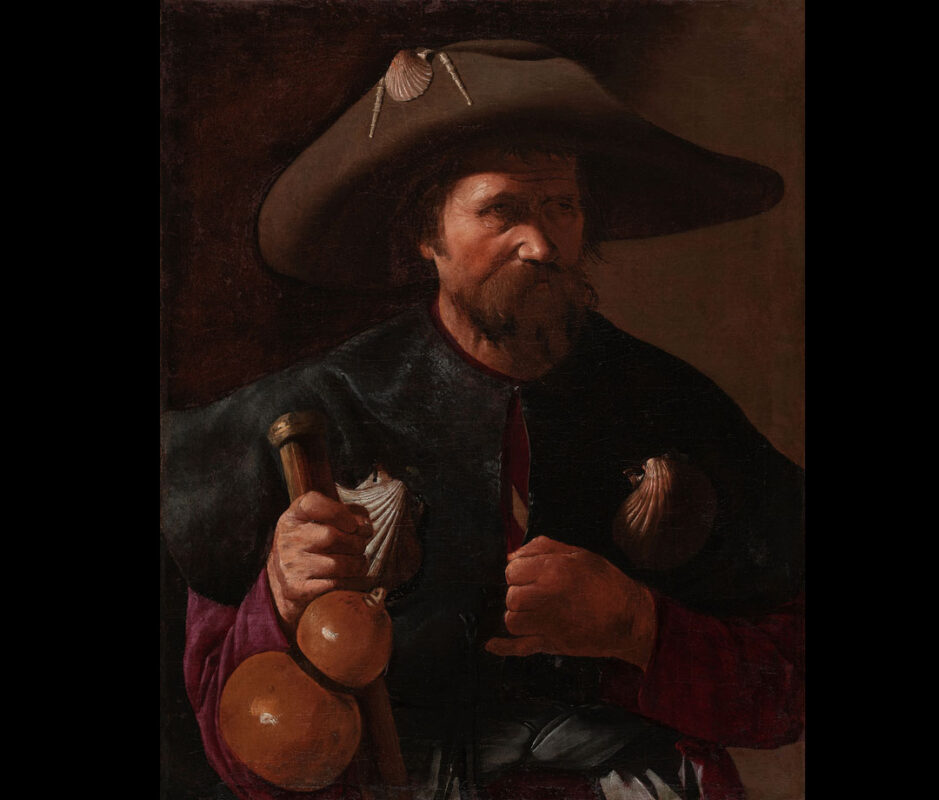
“Saint James the Greater” by Georges de La Tour
The huge increase in the valuation of the Rubens contrasts with the estimate given to the other paintings in the collection (almost all of which were acquired in the late 1990s or early 21st century). For example, “Saint James the Greater” by Georges de La Tour (an artist whose works rarely appear at auction) has a pre-sale estimate of between $3 million and $5 million, practically the same amount that this painting fetched the last time it was put up for auction in 2008. It is not one of the artist’s most important works, but it is a more than correct painting that should reach or even exceed its estimate. Everything said for the La Tour applies to Valentin de Boulogne‘s “Christ Crowned with Thorns”, which sold seven years ago for about $5.2 million and is now expected to fetch between $4 million and $6 million. The De la Tour was sold for $3.7 million, and the De Boulogne fetched $4.9 million.
Dutch Masterpieces from the Theiline Scheumann Collection at Sotheby’s, 26 January 2023
Unfortunately, the auction titled “Dutch Masterpieces from the Theiline Scheumann Collection” does not include any masterpieces, but only a dozen or so interesting paintings from the Dutch Golden Age. Nevertheless, I admit to having had a good time appreciating the sense of humour of “A winter landscape with skaters and townsfolk on a frozen river by a tower“, one of Barent Avercamp‘s typical winter scenes (pre-sale estimate $400,000 to $600,000) in which several characters have a pleasant (in many ways) time on the surface of a frozen river. No one seemed to share the semi-hidden humour of this painting, which found no buyer. More successful was Frans van Mieris the Elder’s “A young woman sealing a letter by candlelight”, which fetched $2.7 million against an estimate of $1.5 million to $2 million.
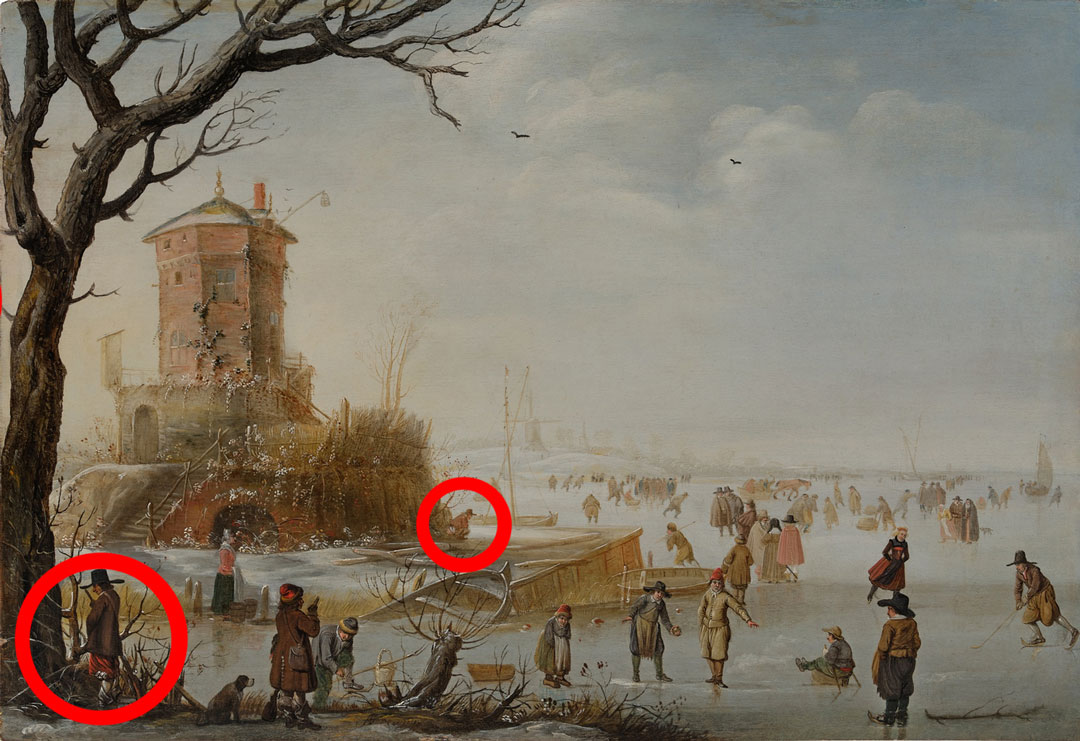
Excuse me, sir… You can’t do that there… SIR, DON’T DO THAT THERE! (“A winter landscape with skaters and townsfolk on a frozen river by a tower” by Barent Avercamp)
Master Paintings Part I at Sotheby’s, 26 January 2023
The work with the highest estimate of this auction ($3-5 million) is a “Portrait of a young man with a quill and a sheet of paper, possibly a self-portrait of the artist“, which Sotheby’s attributes to Bronzino. Agnolo di Cosimo, known as Bronzino (1503-1572) is one of the great figures of Florentine Mannerism, and the appearance of a work by him on the market is highly unusual. In the last ten years, only one painting with a more or less convincing attribution to Bronzino has appeared at auction: the “Portrait of a Young Man with a Book” which Christie’s offered in 2013 for between $12 million and $18 million and which, after failing to find a buyer, was sold two years later for $9.1 million. As if that were not enough, the possibility that it is a self-portrait of the artist adds to its interest.
But is the attribution to Bronzino firm? It can hardly be said that it is. As Sotheby’s points out, the work has in the past been attributed to both Bronzino and other Mannerists of his time such as Francesco Salviati and even Jacopino del Conte. Comparison with other works by Bronzino that Sotheby’s includes in the catalogue (such as the portrait of Lodovico Capponi in the Frick Collection and the portrait of a young man in the Metropolitan) is not very favourable for this painting, which is less attractive than them, although the “Portrait of Lorenzo Lenzi” (one of Bronzino’s earliest works) may support Sotheby’s optimism. The catalogue mentions how “the young man’s cylindrical hands and round fingernails, which differ markedly from the attenuated hands that feature in Pontormo’s portraits, call to mind those in the Portrait of the Woman in Red in the Städel Museum and the ‘Portrait of the Woman in Green’ in the Royal Collection.” The position/shape of the hand holding the quill, however, also differs from that of the aforementioned “Portrait of a Young Man with a Book” sold in 2015, although as that painting is not a securely attributed work it might be risky to use it as a reference. The possibility that the portrayed figure is a self-portrait of the artist is -as indicated in the catalogue- only a possibility suggested by Professor Carlo Falciani. The Bronzino was sold for $10,665,000, a huge success and a new record price for the artist.
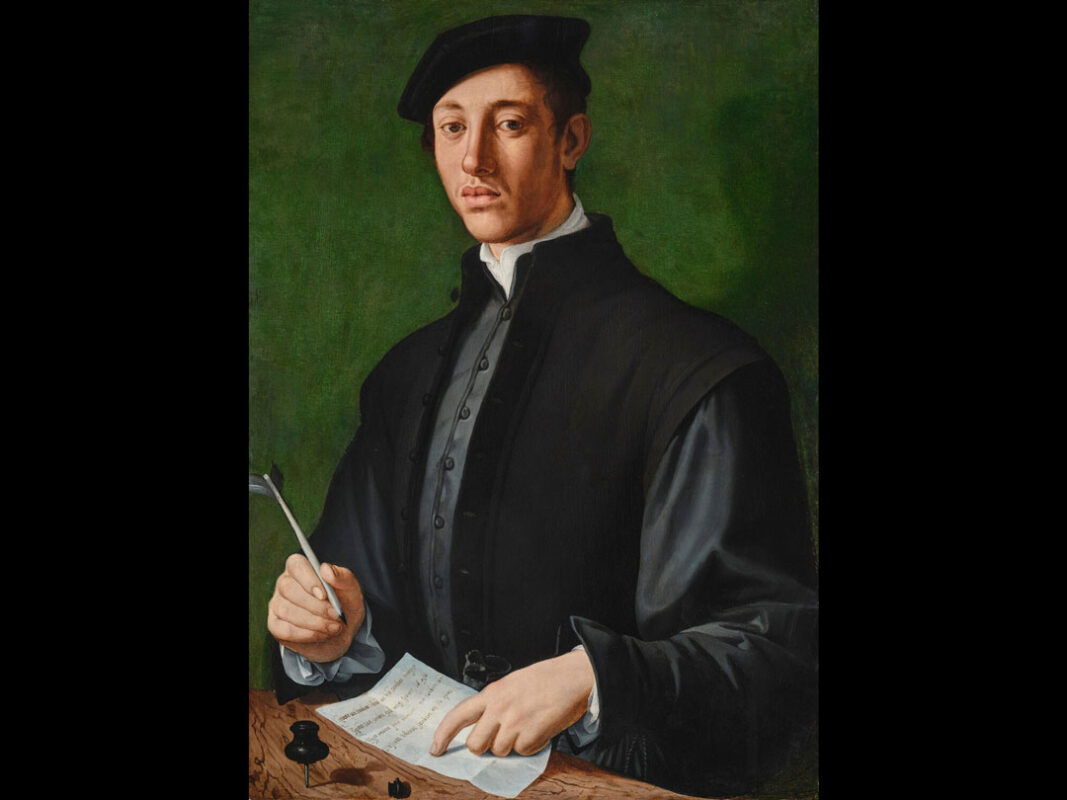
“Portrait of a young man with a quill and a sheet of paper” attributed to Bronzino
But, regardless of the conclusion that each scholar may reach, I would like to take this opportunity to emphasise an idea that I have commented on other occasions: the more than excessive use by auction houses of the category of “masterpiece”. In the catalogue of this work, Sotheby’s defines this portrait as “a masterpiece of the Florentine Cinquecento“. Considering also the title of the other two Sotheby’s auctions (“Masterpieces from the Fisch Davidson Collection” and “Dutch Masterpieces from the Theiline Scheumann Collection”) it seems a clear case of “if everything is wonderful then nothing is wonderful”. While respecting all opinions about this work, I personally find it more appropriate to reserve the category of “masterpiece of the Florentine Cinquecento” for works such as Leonardo’s “The Virgin and Child with Saint Anne” or Pontormo’s “The Deposition from the Cross“.
A painting that has had much less “hype” than the Bronzino, as well as a much lower pre-sale estimate (between $1.5 million and $2 million) is Sebastiano del Piombo’s “Portrait of a woman holding a crown of laurels, half-length“. I think there should be no reason for this. Sebastiano del Piombo is one of the great names of the Italian Renaissance (by no means of lesser importance than Bronzino), an interesting figure between High Renaissance and Mannerism who -despite being largely obscured by the fame of Raphael- uniquely combines the characteristics of the Venetian and Roman schools. And his works are not exactly plentiful on the market. In the last five years, I have record of only two works: another “rediscovered” Del Piombo (“The Vision of St Anthony Abbot“) which Christie’s auctioned for just over $3.1 million; and a small and highly dubious “Portrait of a Man in Armour, possibly Ippolito de’ Medici” which Sotheby’s attempted to sell for a starting price of close to £1 million, but failed to find a buyer. This beautiful portrait failed to sell!
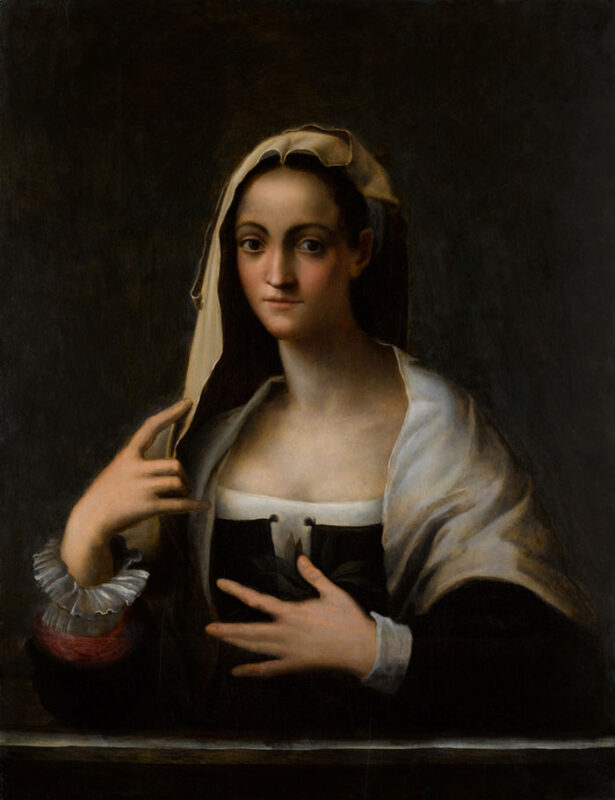
“Portrait of a woman holding a crown of laurels, half-length” attributed to Sebastiano del Piombo
As with the “Bronzino”, there is the question of attribution. Although far from certain, it seems reasonably convincing. Three versions of this composition are known, one of which (of lesser quality and in a far from perfect state of preservation) was auctioned some seven years ago for a mere £56,250, a clear indication that no one -or virtually no one- considered it to be the original. The version included in this auction is certainly a high quality painting, and according to Sotheby’s infrared analysis has revealed the presence of pentimenti in several areas of the painting. While I continue to argue that the presence of pentimenti does not necessarily mean that the painting cannot be a copy (as auction houses often seem to conclude), it is a point in favour of the attribution to Sebastiano.
Let us continue with works whose attribution has not been proven: an “Ecce Homo” auctioned three years ago as attributable to the “Studio of Titian” appears in this auction attributed to “The Sun Amidst Small Stars”, and with an estimate of between $1.5 million and $2 million (it fetched $2.1 million). Sotheby’s notes that “the recent cleaning of this later overpaint has revealed the work to be, in the words of Paul Joannides, ‘wholly autograph’.” A small “Portrait of a man with a moustache and beard, bust-length“, attributed to Annibale Carracci, comes to auction with an estimate of $150,000-200,000.
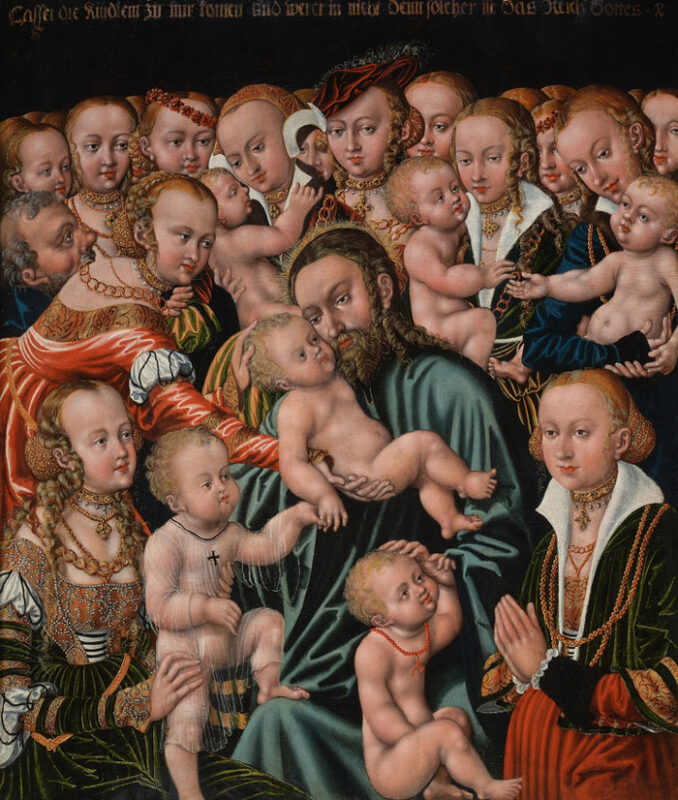
“Christ copypasting blessing the children” by Master H.B. with the Griffin Head
I have spent considerable time studying the “Christ Blessing the Children” (pre-sale estimate $400,000-$600,000) that Sotheby’s attributes to the artist known as Master H.B. with the Griffin Head, trying to find something intelligent to comment on, some context to provide, some light to shed, but I give up: absolutely everything about this painting is strange. The artist is strange, with virtually no information about him (or her) other than that related to this work; the work is strange, a kind of mosaic without perspective or expression; even the provenance is strange, with no information until the work was auctioned in Florida about three years ago. But within this strangeness the work possesses an equally strange proto-folk magnetism. In the catalogue, Sotheby’s states that “in a time when childhood mortality rates were extremely high, a painting like this, serving an almost apotropaic function, would have appealed to wealthy German patrons hoping to protect their offspring. To the modern eye, however, the painting evokes a particular charm not often found in the typically more somber religious paintings of the period.” This strangely disturbing painting sold for $441,000.
One of the most interesting and enigmatic paintings in the auction is a small “Nativity” attributed to the Master of the Spinola Annunciation. Painted around 1310-1320, it is part of a group of four paintings of similar style and dimensions that must have formed a diptych or polyptych. The work was last auctioned at the Galerie Koller in Zürich, and comes from a private collection which, according to the catalogue of the exhibition “Florence at the Dawn of the Renaissance” (Getty Museum, 2012-2013), is the Alana Collection, one of the finest private collections of Gothic and Renaissance painting in the world, and which has recently sold some of the works in the collection. This tiny but excellent painting was once attributed to Giotto or his immediate circle, and has a pre-sale estimate of $2-3 million, the second highest at auction along with Pieter Brueghel the Younger‘s “The Wedding Procession“, a “Study for Saint Jerome” by Sir Anthony van Dyck, and a study for John Constable‘s “Helmingham Dell“. The “Nativity” was auctioned for $2.4 million.
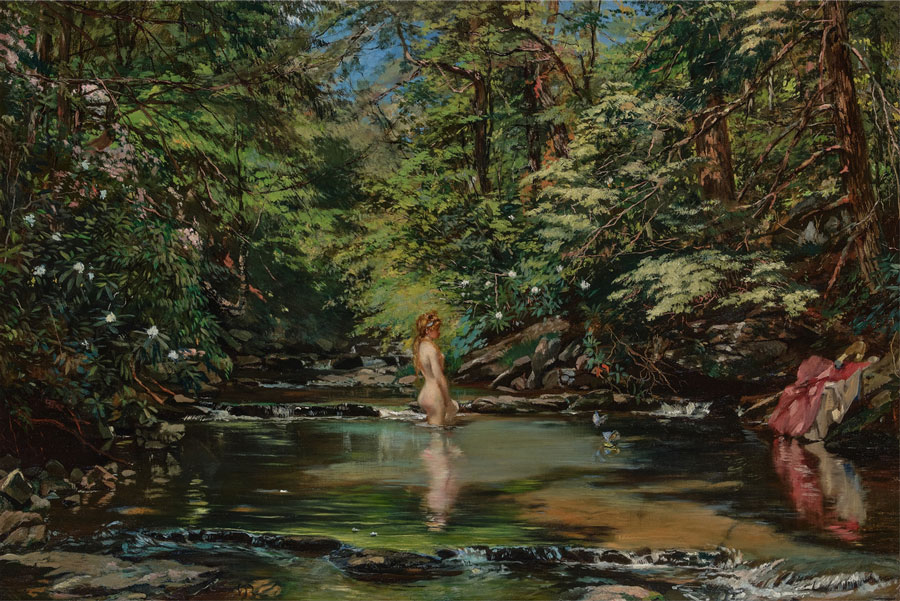
The pleasure of looking without being seen: Frank Buchser’s “Sacred nook in Virginia”.
Speaking of oddities, the inclusion in this auction of Frank Buchser‘s “Sacred nook in Virginia” (1867, pre-sale estimate $150,000-200,000) is somewhat unusual, considering that the next day is the auction titled “The European Art Sale Part I“, where this work would have been more contextualised. In any case it is a beautiful work, which looks more like a mythological scene of a nymph at the fountain than a real landscape. In this respect, Sotheby’s notes that “working in a proto-Impressionistic style, Buchser appears more concerned with creating an atmospheric effect than in depicting the scene with topographical accuracy—indeed, the landscape is rendered from a vertiginous point of view, as if the spectator were hovering mid-stream. The nude woman, whose pink dress and hat lie discarded on the riverbank, appears blissfully unaware she is the subject of the artist’s attention, heightening the sense of voyeuristic pleasure.” Other interesting works include “The Destruction of the Palace of Armide” (1737, pre-sale estimate $600,000 to $800,000), a Rococo tour-de-force by Charles-Antoine Coypel, son of the more famous Antoine Coypel, and a “Mocking of Christ” attributed to an artist of the Circle of Caravaggio, which has a modest estimate of $80,000 to $120,000.
Follow us on:

